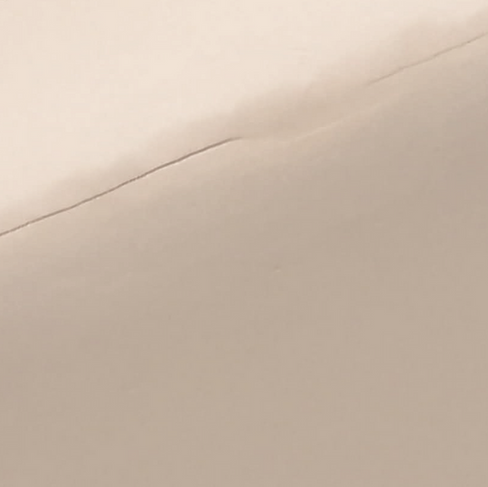
Your attic might be out of sight, but it should never be out of mind, particularly regarding hidden mold growth. Mold is a widespread issue that can quietly flourish in often overlooked areas, and one of the most common yet unknown mold breeding grounds is near leaking AC ducts. These ducts, crucial for temperature regulation and airflow throughout your home, can become a major moisture source if they develop leaks or condensation problems. When warm, humid air from your living areas meets the cooler surfaces of leaking ducts, condensation can occur. This moisture provides an ideal setting for mold spores, which are always present in the air, to settle and proliferate.
How Does Mold Grow Around Leaking AC Ducts?

When there is a hole or gap in your ductwork, it creates a significant issue by allowing hot attic air to infiltrate and mix with the cool air that is being circulated through your air conditioning system. This unintended blending of air masses can drastically alter the temperature and humidity levels within the ductwork. The temperature difference between the cool air intended for your living spaces and the warmer air from the attic can lead to condensation forming on the surfaces of the ducts. As this condensation accumulates, it results in moisture buildup that can have serious consequences for your home's structural integrity and indoor air quality.
Over time, this excess moisture does not simply evaporate; instead, it begins to drip onto various surfaces within your home, including wood framing, ceilings, insulation, and other materials that are susceptible to water damage. The presence of this water creates an environment that is highly conducive to the growth of mold, particularly black mold, which thrives in damp, dark, and poorly ventilated areas. Mold spores can spread rapidly, leading to not only aesthetic concerns but also potential health risks for the occupants of the home.
Signs of a Hidden Mold Problem in Your Attic
Mold often grows unnoticed for months or even years, thriving in environments that provide the right conditions—namely moisture, warmth, and organic material. This slow and stealthy growth can lead to significant issues, not only affecting the structural integrity of buildings but also posing health risks to occupants. Identifying mold in its early stages is crucial to preventing extensive damage and mitigating health concerns. Some key indicators that mold may be present include.
✅ Musty odors coming from air vents or attic spaces
✅ Water stains, cracks, or discoloration on ceilings and walls
✅ Increased allergy symptoms or respiratory issues
✅ Visible mold growth on wood beams, insulation, or ductwork
✅ Indoor Humidity Levels Observing moisture and sensing it might be a problem.
The Importance of Semi-Annual Attic Inspections by Safe Home Management

Since mold growth in the attic is frequently concealed, Safe Home Management highly advises scheduling a professional attic inspection with one of our specialists at least twice a year. This should include both a visual examination and an air quality evaluation to ensure everything is thoroughly checked. Regular inspections help in detecting:
🔍 Leaking or damaged ductwork
🔍 Excess moisture or condensation buildup
🔍 Early signs of mold before it spreads
🔍 Air quality assessment to determine the presence of mold particles in the attic air.
How Safe Home Management Can Help
At Safe Home Management, we focus on conducting weekly home visual inspections. Unfortunately, we do not inspect attics or crawl spaces weekly, but you can request such inspections. Our specialists will meticulously visually examine your ductwork for leaks, and evaluate moisture and humidity levels, and our air quality testing is comprehensive, offering real-time data on various critical metrics. Each test is performed in the attic/crawl space area of your home to ensure maximum accuracy and coverage. We also recommend effective solutions to prevent mold from taking over your home if it is detected.
Enhancing Air Quality with an Air Purifier for Your Home.
At Safe Home Management, we strongly recommend using an air purifier unit set to auto mode inside your home—even when the house is unoccupied. While your AC system continuously circulates air, having an additional layer of protection can help maintain clean, healthy indoor air and provide extra peace of mind.
Why an Air Purifier?
✅ Continuous Air Filtration – Helps remove dust, allergens, pollen, mold, and airborne particles.
✅ Added Security – Acts as an extra safeguard for your indoor air quality.
✅ Remote Monitoring – The Levoit Air System, endorsed by Safe Home Management, comes with an app that alerts you on your phone if air quality issues arise—allowing you to monitor your home from anywhere.
✅ Professional Maintenance – Our inspectors are familiar with this model and will regularly monitor, clean, and change filters as needed.
How to Get Your Air Purifier Installed While You're Away
📦 Purchase the Levoit Air System we use and recommend
.📞 Contact your Safe Home Management representative to coordinate.
🚚 Click here to buy and ship it to us, and we will install it in your home while you’re away, as our member, free of charge.
Having an air purifier running at all times is a simple yet effective way to improve indoor air quality and protect your home. Contact us today to learn more!
Looking for a trusted home watch service? Safe Home Management is here to help!






Comments